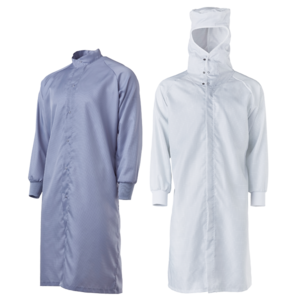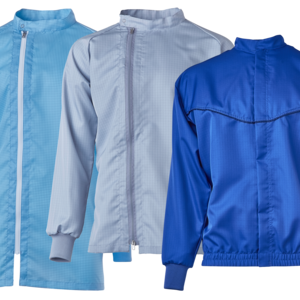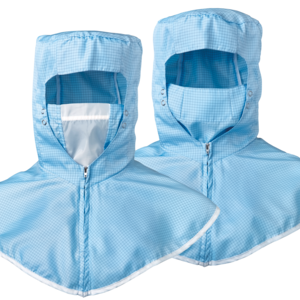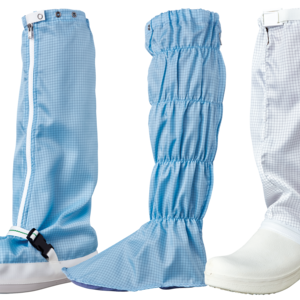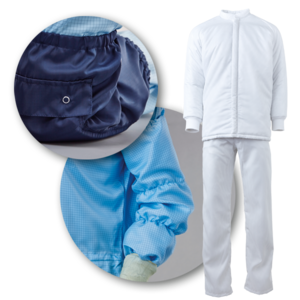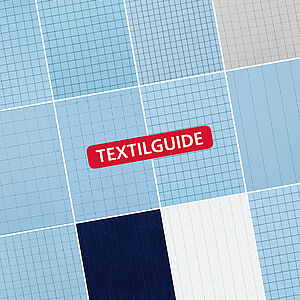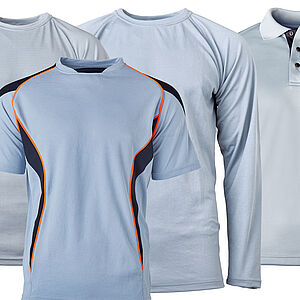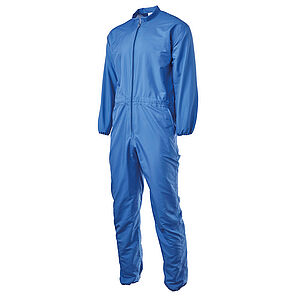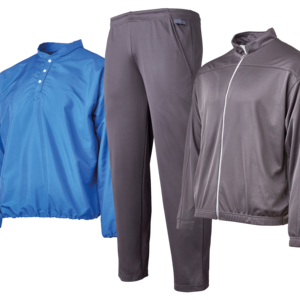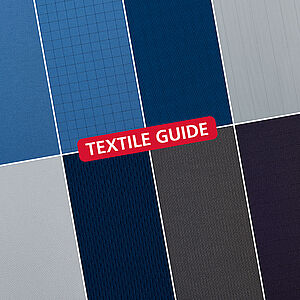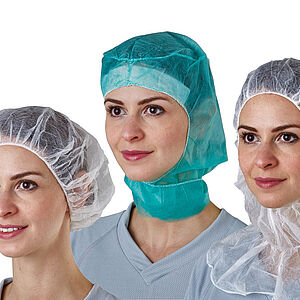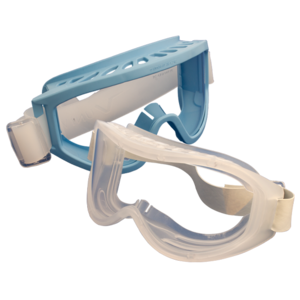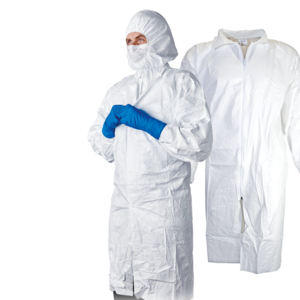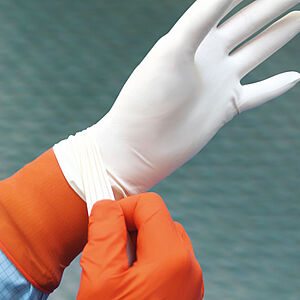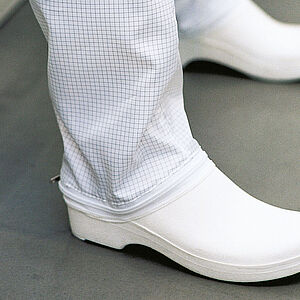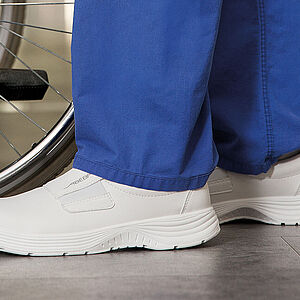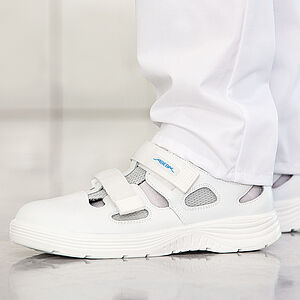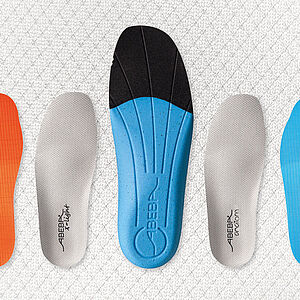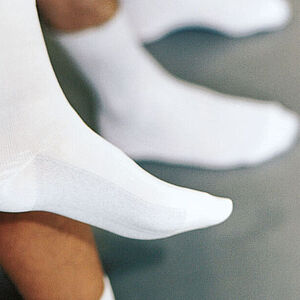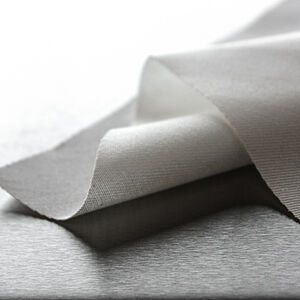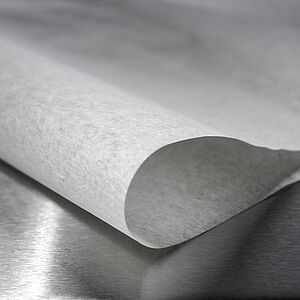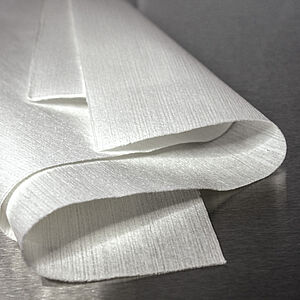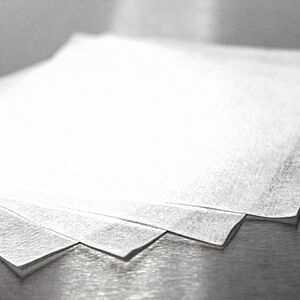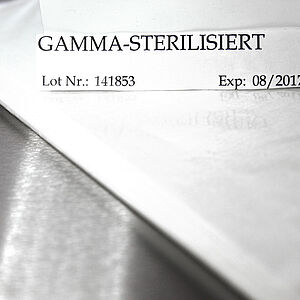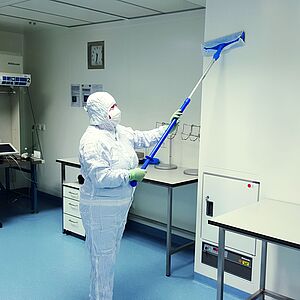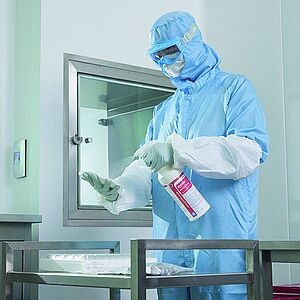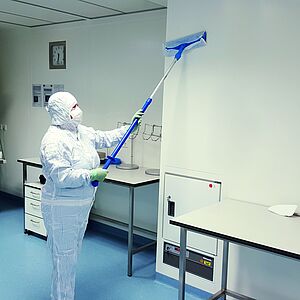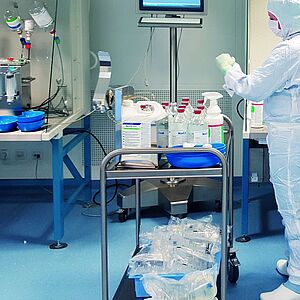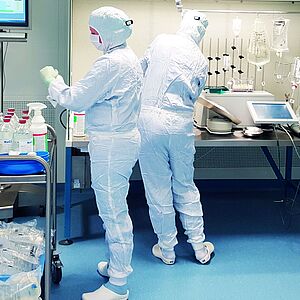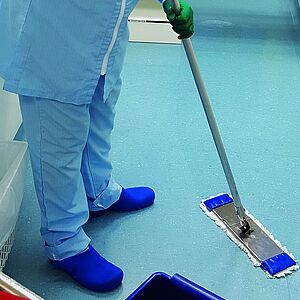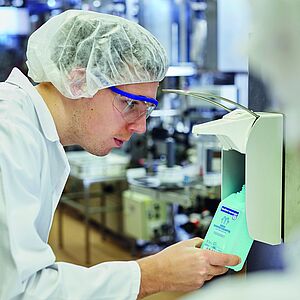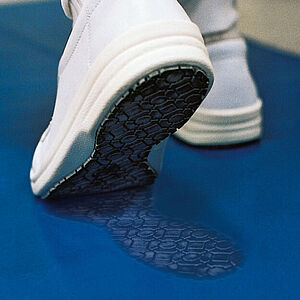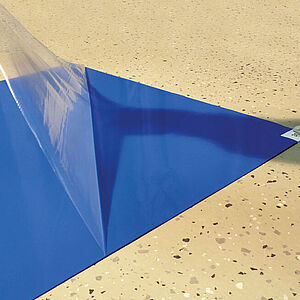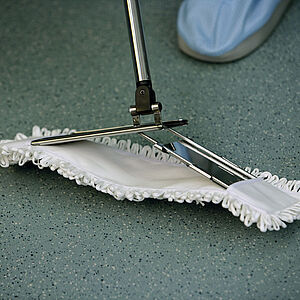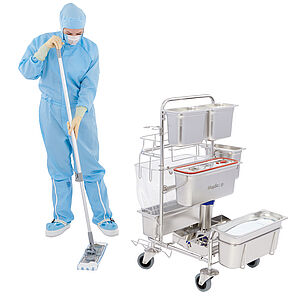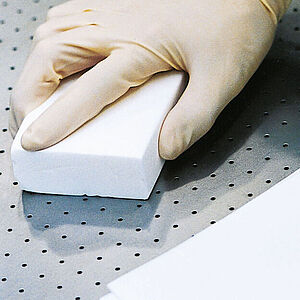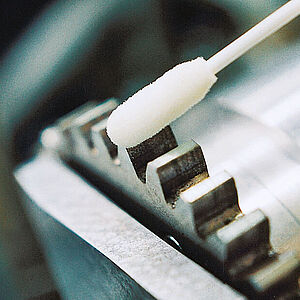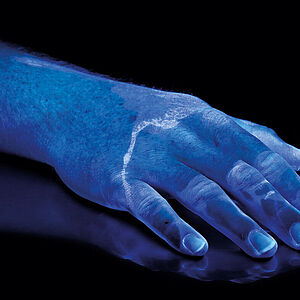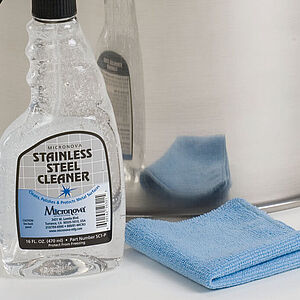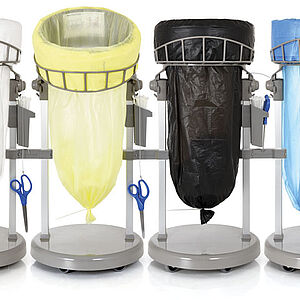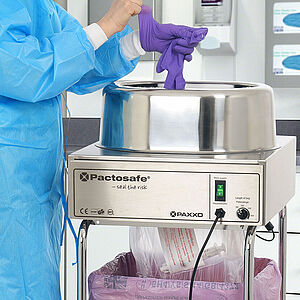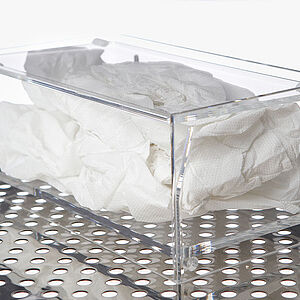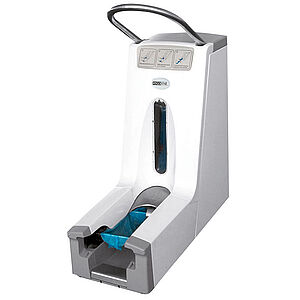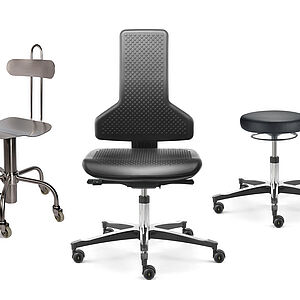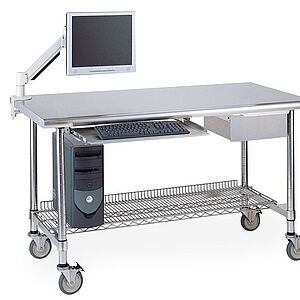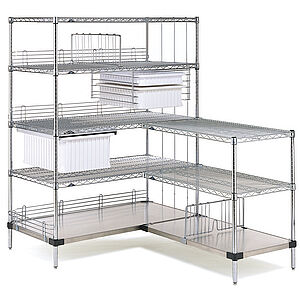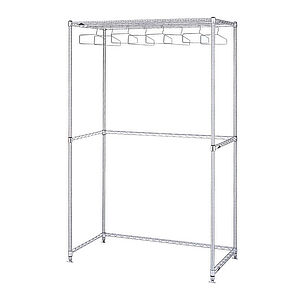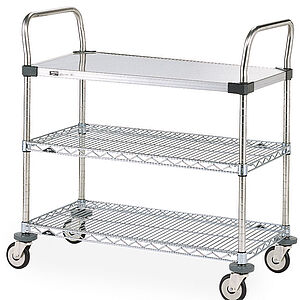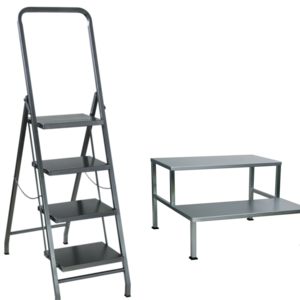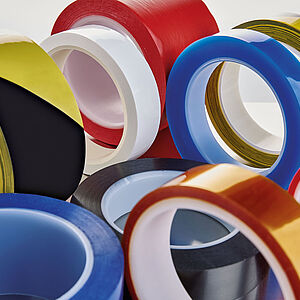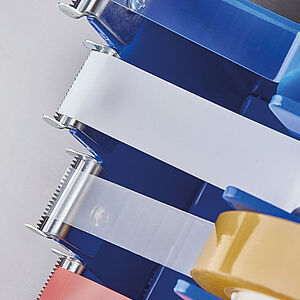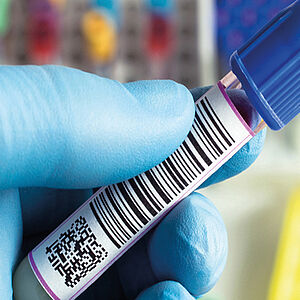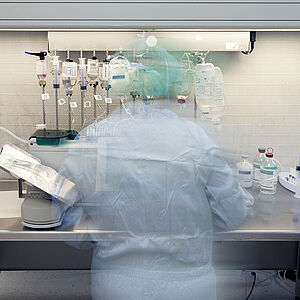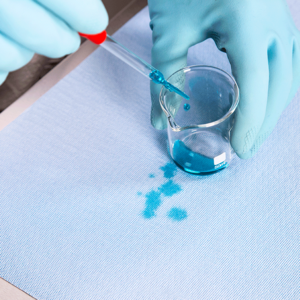Series 428 is knitted from 100% very fine polyester filaments and thus has microfibre-like properties. As a result, even greasy soiling (e.g. fingerprints) can be removed effortlessly, and overall the series 428 can point to good cleaning efficiency. The wipes are primarily used in areas that are monitored solely by particles, but can also be used at any time in microbiological monitored zones. The wipes are cut by laser and thus the wipe edges are sealed. After cutting, the wipes are professionally decontaminated in a cleanroom laundry and packed under ISO 4 conditions (EN ISO 14644-1). The wipes, even if they are made of pure synthetic fibres, have a good absorption capacity. Due to the cleanroom-compatible decontamination, the wipes have relatively low levels of ionic and metallic contamination.
Facts
Special requirements
Knit, 100% PES, microfibre like, sealed edges
Properties
- 100% polyester
- knitted fabric made from microfibres
- edges cut and sealed by laser
- low particle and fibre emission
- abrasion resistant
- decontaminated in a cleanroom laundry
- double bag packed in a cleanroom (air cleanliness class ISO 4)
Advantages
- wipe with good cleaning efficiency
- reduced particle and fibre emission due to sealed edges
- very wide range of applications
- low ionic and metallic contamination
- soft surface structure
validated sterile available
Applications
- cleaning wipe especially for critical areas as well as for all other zones
- well suited for optical devices, screens and other scratch-sensitive surfaces
Product recommendation based on cleanroom classes
Of course, cleanroom wipes used in ISO 5 can also be used in ISO 9, but in this case the economic efficiency and usefulness should be considered.
A 1 to 1 allocation of cleanroom wipes to an air cleanliness class according to ISO 14644-1 is not possible. Recommendations can only be made on the basis of special properties relevant from a cleanroom technical point of view, such as "abrasion resistance" or "particle emission". Users can find further information on this in VDI Guideline 2083 Part 9.2.
Technical data
| Properties | Unit of measurement | Value | Test method | |
|---|---|---|---|---|
| Material | 100% PES | |||
| Edge processing | Laser cut | |||
| Mass per unit area | ± 10 g/m2 | 155 | ||
|
Absorption capacity (Ai) intrinsic (Ae) extrinsic | ml/g ml/m2 | 3.0 430 | IEST-RP-CC004.3 | |
| Absorbency rate | second | < 1 | IEST-RP-CC004.3 | |
|
NVR Non-volatile residues |
IPA based DI water based |
g/m2 g/m2 |
0.08 0.03 | IEST-RP-CC004.3 |
| Particle residues | > 0.5 µm | x 106/m2 | 8 |
IEST-RP-CC004.3 Sec. 6.2.1 |
| Fibre residues | ≥ 100 µm | count/m2 | 133 | IEST-RP-CC004.3 |
| Ionic residues |
Chloride (ClO2-) Nitrate (NO3-) Potassium (K+) Sodium (Na+) Sulphate (SO42-) |
µg/g µg/g µg/g µg/g µg/g |
0.20 0.20 0.10 0.10 0.10 |
IEST-RP-CC004.3 |
| Organic contaminants |
silicone oil amides D-n-octylphthalate (DOP) |
n. d. n. d. n. d. |
IEST-RP-CC004.3 by FTIR spectrometer Fourier transform infrared spectrometer | |
| Size | PU/Carton | subpacked | Art. No. | |
|
9" x 9" 12" x 12" ± 0,2"/0,5 cm |
1,500 1,000 |
10 bags à 150 wipes 10 bags à 100 wipes |
55428 0909 55428 1212 | |
| n. s. = not specified n. d. = not detectable |
Note






